The following is an edited transcript of a video by Walter Veith called
“The Genes of Genesis”.
Please note: The live video on this page is produced by Peter Dimond O.S.B. from Most Holy Family Monastery.
To my knowledge, Peter Dimond and Walter Veith, and or their associated networks or companies are in no way affiliated. And as such no connection can be presumed by the inclusion of this video with the transcript of Walter Veith’s video on the ‘Genes of Genesis’ series on this page.
Genes of Genesis
This video transcript is part one of a 10 part series produced by Amazing Discoveries called “The Genesis Conflict”.
The Full series can be found here at The Genesis Conflict.
More information on the series and many other great productions by Amazing Discoveries can be found by clicking Amazing Discoveries
Tonight’s lecture is titled “The Genes of Genesis”, and we are going to talk about the philosophy behind natural selection, and the science of evolution in general. Genes of Genesis
The founder of this modern theory is Charles Darwin; and Darwin accepted a position as ships naturalist on the HMS Beagle to study the diversity of organisms while travelling around the world; in particular, to draw maps of South America and the Islands.

Information embedded in DNA Proves The Existence of God
-
Information embedded in DNA Proves The Existence of God
This documentary video was produced by Bro. Peter Dimond O.S.B. from Most Holy Family Monastery, it serves to refute the theory of evolution. The fact that DNA is so complex and the information embedded to it are unique proves the existence of super intelligent creator who created this miniature machinery. For more information please visit these websites. A study of the DNA and human genome proves the existence of a creator and the impossibility of ANYTHING coming about by chance. Peter Dimond has done an excellent job with this presentation and although I do not agree with the doctrines and teachings of the Catholic Church it is impossible to hide what true science proves as proof of our creator, and credit is due for this production. Many thanks for your wonderful work.
Of course he didn’t actually come up with the original concepts, they have been around for a long long time, even since the time of the Greeks, and Darwin’s own grandfather was a proponent of naturalistic ideas.
He also had theological training, and Charles Darwin believed, at the time that he was active on the ship. He believed at that stage that God had created immutable unchangeable species.
You see the mindset at that time was such that people believed that everything that existed on the planet had been created individually by God: and of course naturalistic science excludes that possibility. Now when Charles Darwin was travelling on this ship he came up with the idea of natural selection, and we’ll talk about that in some detail in a moment.
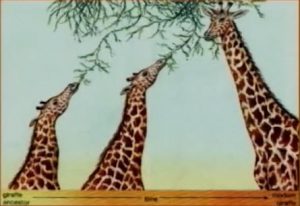 Basically this is the concept of natural selection: If you have three giraffes for example, the ones with the longer necks would have a selective advantage when it comes to feeding on high branches, and therefore they would be selected to have more offspring, and eventually replace those with shorter necks, that’s basically what natural selection teaches. There is a counter concept which was known as Lamarckism. Genes of Genesis
Basically this is the concept of natural selection: If you have three giraffes for example, the ones with the longer necks would have a selective advantage when it comes to feeding on high branches, and therefore they would be selected to have more offspring, and eventually replace those with shorter necks, that’s basically what natural selection teaches. There is a counter concept which was known as Lamarckism. Genes of Genesis
And Lamarckism taught that the animals tried to reach the higher branches, and so eventually the necks got longer.
Now these are the two opposing concepts that existed that at the time that Darwin formulated his theory. Of course Darwinism is recognised as the scientifically logical theory where as Lamarckism is discredited these days.
I always put it to my students this way; Do birds fly because they have wings, or do they have wings because they fly? Which one is correct, which one do you believe is correct?
Obviously they fly because they have wings, that’s why they fly. So you must first have wings, and then you can fly, and if you have different wings well then one can fly better than the other one and then natural selection can start operating.
Birds did not wish to fly and therefore developed wings, because then all of us would have wings; Right?Because man has been wanting to fly ever since we can remember.
Now science tells us that the object has to be there before selection can take place, and that is pretty logical. So Darwinism is superior to Lamarckism. Now it’s interesting that science readily recognises this, but when push comes to shove, then they often they fall back to the Lamarckism. Genes of Genesis
That’s very interesting because you may remember we discussed this in a previous lecture on the evolution of man, and one of the theories that they have as to why man began walking upright is that he lived in a time when the grassland took over, and because they could not see over the grass; What did they do?
They stood up on their hind legs to look over the grass, and this eventually led to the development of upright gaits.
Is that Darwinism or Lamarckism? That’s Lamarckism. So science shoots down Lamarckism but uses it when it finds it useful, in actual fact you should conjecture differently on that issue.
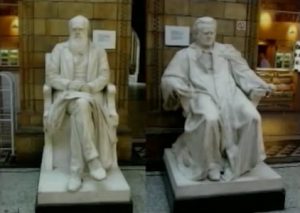 Now when Charles Darwin was travelling on this ship, and developing these ideas to brings back into society he was actually quite a shy man. But fortunately for him he found support in a man named Huxley who was successful in pushing Darwin’s theology and consequently became known as Darwin’s bulldog. Now Huxley took up this challenge to champion Darwinism to the scientific community, and is credited with conquering for science in a debate with bishop Wilberforce. Which he didn’t actually win on the grounds of science, but on the grounds of the ridicule and contempt placed on the science by the bishop.
Now when Charles Darwin was travelling on this ship, and developing these ideas to brings back into society he was actually quite a shy man. But fortunately for him he found support in a man named Huxley who was successful in pushing Darwin’s theology and consequently became known as Darwin’s bulldog. Now Huxley took up this challenge to champion Darwinism to the scientific community, and is credited with conquering for science in a debate with bishop Wilberforce. Which he didn’t actually win on the grounds of science, but on the grounds of the ridicule and contempt placed on the science by the bishop.
So you see the attitude was what determined the winner and not necessarily the message; which is quite sad. And that is a good warning to us to be careful of how we approach things. Genes of Genesis
Now Charles Darwin was very interested when they came around the coast of South America and came to this group of islands known as the Galapagos Islands. It was on these islands that he found some very interesting creatures, some of which we looked at last night, like these giant tortoises, and those beautiful Galapagos marine iguanas, and all of those interesting creatures.
But amongst them also were these finches, and these finches were unique, some of them had large beaks, some small, but some of them at a much larger beaks and these beaks were adapted to certain circumstances. So for example those with the larger beaks could crush hard seeds and open them up and reach inside; those with the smaller beaks had to feed on different things so some of them even developed the method of using tools to get hold of grubs and other creatures inside the bark of plants, and so each one of these was slightly different.
Gregor Mendel had done his work, but it lay somewhere on a dust pile in some monastery. Nobody knew anything about genetics so how it was that inherited characteristics were transferred was unknown. There was also this idea that God had created immutable unchangeable species, and there was a scientist by the name of Linnaeus who took all the creatures that he knew and classified them according to what was to be known as the binomial nomenclature. So everything got two names, so for example we are Homosapien’s; we are ‘Homo’ ‘sapien’s’, two names, and each creature got its name and it was considered to be a unique creation, and so the species numbers increased enormously until today we have millions of species world wide.
Now when Charles Darwin looked at these creatures he thought about this, and said. Now is it possible that we started out with one finch family sometime ago on these islands, and that all of these evolved out of that original parent pair, is that a logical assumption? And yes it is a logical assumption, it is quite probable that this is a variation that developed on these islands.Genes of Genesis
But what Charles Darwin did then is he said that God did not create immutable, unchangeable species, in fact there is no such thing as a creation; so God was thrown out of the equation. Was it necessary to throw God out? That is the question that we will have to answer tonight.
The fact of the matter is, it does seem as though whatever was there was not unchangeable.
Well science has come a long way since then, and we have a whole theory of how everything came into being.
So let’s take it from the beginning and see what science teaches today. So how did life begin?
Well science teaches that this earth originally was very different to what it is today, there was volcanic activity, the atmosphere was totally different to what it is today.
Now that’s all very nice and well, except that there are a number of problems with this idea:
 Firstly the atmosphere would have to be one that excludes oxygen, this is very important. So the primitive earth reducing atmosphere is supposed to have had hydrogen, ammonia, carbon dioxide, methane, nitrogen, and water; and where did these come from? Well they say from volcanic gases, although volcanic gases are also associated with carbon monoxide and sulphur dioxide, so it doesn’t really quite fit. But nevertheless if it had however been like the present atmosphere which contains oxygen, then the evolution of molecules would have been impossible because oxygen burns up everything.
Firstly the atmosphere would have to be one that excludes oxygen, this is very important. So the primitive earth reducing atmosphere is supposed to have had hydrogen, ammonia, carbon dioxide, methane, nitrogen, and water; and where did these come from? Well they say from volcanic gases, although volcanic gases are also associated with carbon monoxide and sulphur dioxide, so it doesn’t really quite fit. But nevertheless if it had however been like the present atmosphere which contains oxygen, then the evolution of molecules would have been impossible because oxygen burns up everything.
Oxygen would destroy everything before it could develop by the process of oxidation. Genes of Genesis
So all scientists agree it would have to have been a reducing atmosphere, now what did Haldane’s do? He passed sparks through such an atmosphere, and then trapped whatever was formed in the bottom and analysed it. Now if he had left it there in the atmosphere for another cycle then everything that was formed would have been destroyed by the next process. So he had to have a trap; Would there have been a trap somewhere on the planet before? Probably not, but there’s another problem; and that is the various molecules of life that had to form needed very different circumstances.
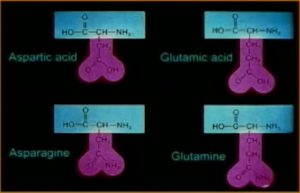 For example if you look at the amino acids you have different amino acids, and each one of these amino acids has this NH2 group, and this NH2 group had to of course be derived from this atmosphere, and it comes from ammonia, but if you have ammonia in the atmosphere, then sugars don’t form. So this is a big problem; plus you need a very acidic environment in order for these components to form, and then you would have to have only the correct ones to form, and that would not happen.
For example if you look at the amino acids you have different amino acids, and each one of these amino acids has this NH2 group, and this NH2 group had to of course be derived from this atmosphere, and it comes from ammonia, but if you have ammonia in the atmosphere, then sugars don’t form. So this is a big problem; plus you need a very acidic environment in order for these components to form, and then you would have to have only the correct ones to form, and that would not happen.
Because when you pass these sparks through the atmosphere you get left-handed ones, you get right-handed ones, and you get all kinds of amino acids where the amino group is attached to any one of these carbons along the chain, and not necessarily to that first carbon next to this group here, which is the carboxyl group.
And so if you have just one wrong amino acid anywhere in a chain, then everything is non-functional. This creates a major problem as you need just the right circumstances, plus you need mechanisms for selecting the correct amino acids which are useful to life, one wrong amino acid in there anywhere and you have a problem. Plus, even if you get the amino acids; How do you get them to come together, and join together?
You need enzymes for that, which means you need a protein to make a protein. So what came first? The protein; or the protein that makes the protein? So it’s a bit of a problem.
The next problem is; if you want to have the building blocks of our DNA which is what our genes consist of, then you need totally different circumstances. For these to form you have to take all the nitrogen out of the atmosphere, change it into a cyanide solution, multiply that by ten, dissolve it in the ocean and then you can get these molecules: But then you wouldn’t get anything else!
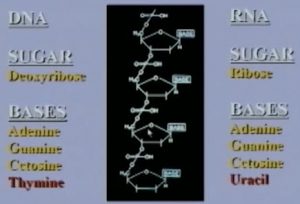 If you’re going to make these sugars that we spoke about earlier that are required in the DNA molecule; for example Ribose, then you’re not allowed to have ammonia. And; if you don’t have ammonia then you don’t have amino acids. So you would need to have many planets in order to create these things. No wonder science is now saying it’s not possible here on earth, and therefore maybe it happened in space; and so they create another theory and call it panspermia. Genes of Genesis
If you’re going to make these sugars that we spoke about earlier that are required in the DNA molecule; for example Ribose, then you’re not allowed to have ammonia. And; if you don’t have ammonia then you don’t have amino acids. So you would need to have many planets in order to create these things. No wonder science is now saying it’s not possible here on earth, and therefore maybe it happened in space; and so they create another theory and call it panspermia. Genes of Genesis
Now this DNA molecule is another amazing story of life, even if you get all the building blocks to form, how would you get it to form a string containing all the information that you need for life? How do you get it to do that? It has never ever been demonstrated in a laboratory, it requires a very complex enzyme system for it to form these high energy bonds that are locked into this molecule, and the probability of these molecules forming is so remote, that we could say they are non-existent.
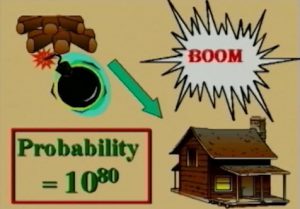 So let’s have a look at what the probability would be; for example of a bomb exploding under a pile of wood, and going “BOOM” and then falling down from the sky and forming this perfectly functional little house. What would the probability be? Well; the probability is very very remote, let’s give it a very good probability and let’s say the probability is 1 in 10 to the power of 80. Now what does that number mean, it sounds like a very small number? 10 to the power of 80 is what physics claims is the number of particles in the entire universe. Particles! That means not only atoms, but sub-particles, electrons, hadrons, quarks, neutrons, and protons; in the entire universe.
So let’s have a look at what the probability would be; for example of a bomb exploding under a pile of wood, and going “BOOM” and then falling down from the sky and forming this perfectly functional little house. What would the probability be? Well; the probability is very very remote, let’s give it a very good probability and let’s say the probability is 1 in 10 to the power of 80. Now what does that number mean, it sounds like a very small number? 10 to the power of 80 is what physics claims is the number of particles in the entire universe. Particles! That means not only atoms, but sub-particles, electrons, hadrons, quarks, neutrons, and protons; in the entire universe.
How many atoms in a pinhead, billions and billions and billions and billions and billions and billions, right?
So imagine how many atoms in the entire universe, it sounds mind-boggling, but it’s only 10 to the power of 80. It’s not a very big number when you look at it, but that is really a mind-boggling number 10 with 80 zeros behind it, that would be the probability.
So what would be the probability of a simple gene coming into existence by chance?
Well there are three nucleotides needed to code for one amino acid in a protein. Now let take a simple protein that has a hundred amino acids, your hemoglobin for example has 600 amino acids, so let’s take a simple protein consisting of one hundred amino acids. Genes of Genesis
To form this acid you will need 300 nucleotides in the right sequence! So what’s the probability of that happening by chance? Well the probability is 10 to the power of 127. That is unfortunately “BOOM”: ‘New York City’. Established by a nuclear explosion. Do you believe that? That is the kind of faith that you need to have.
Now if we look at this DNA molecule it is a masterly construction it consists of these double helix’s, forming the framework of phosphorus molecules, then the bases in between, and in the sequence in which they need to occur. In these bases you have the information for everything that happens in the cell. Now these genes; we call the genotype, and when these genes are expressed, that is turned on, we call that the phenotype. Genes of Genesis
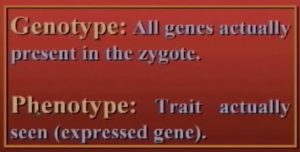 All right; let me explain these terms, it’s very important that we understand how science pictures the evolutionary events around this genetic system. The genotype consists of all the genes actually present in a zygote, that’s the fertilized egg.
All right; let me explain these terms, it’s very important that we understand how science pictures the evolutionary events around this genetic system. The genotype consists of all the genes actually present in a zygote, that’s the fertilized egg.
So all the genes that I have is my genotype, but not all the genes that I have are expressed; so that, which is expressed, or turned on is my phenotype. So if you want to have a look at your phenotype go and stand in front of a mirror and you will see it, that’s your phenotype.
Now there’s a law in evolution which states the following: “natural selection can only operate at the level of the phenotype, never the level of the genotype”. Have you got that? It bears repeating, “natural selection can only operate at the level of the phenotype, never the level of the genotype”. Why not?
Well let me illustrate with an example, two people walk into a game park, and lets say there are wild animals all around them in the game park. One of these person is long and lean, and the other is short and plump; and a predator comes along from behind the bushes and attacks them, a lion or bear, it doesn’t matter, and the two individuals have to run to escape. Which one is most likely going to end up as a meal? The short plump one is; the short plump phenotype is greatly disadvantaged by his body type and most likely to be caught. Genes of Genesis
So by natural selection, the short plump man is removed from the equation, and the long lean man stays: The animal is not concerned about any information in your genotype, and so natural selection does not work at this level.
So what does work at the level of the genotype, how are genes changed over time?
Not by natural selection; but by mutation. That’s right, and how do mutations take place? They are random, they take place by chance and once they are expressed in the phenotype then they can be selected. Does that make sense? Remember Charles Darwin didn’t know anything about this, let me simplify this for you so that everybody can understand this.
Now I know that I’m speaking to some who have biological training, and some who have no biological training, so I’m trying here to target all of you. So if I shoot over your heads tonight there will be plenty that you can take home with at the end of the day in spite of that, and if I shoot too low for your liking, then please tolerate that because there are people here that would otherwise take nothing home with them. Is that fair enough? Good, Genes of Genesis
So let’s sum it up.
This is your genotype, that’s the information in your genes, in your DNA, the phenotype is what you look like, that’s what we said. Natural selection operates at the level of the phenotype, it doesn’t operate at the genotype, that’s where chance operates at, chance through mutation.
Let’s put that into another model; here we have a book of instructions on how to build an airplane. Okay, so this is a book of instructions with detailed direction on how to build an airplane. This book of instructions in our analogy, is “The Genotype”.
(the DNA is a book of instructions on how to build a human being, also “The Genotype”.
And “The Phenotype” is the end result, the actual airplane that we want to build.
Now the question is! “Who wrote the book”?
Obviously some intelligent designer wrote the book, right?
But in our analogy: Who wrote the book? “CHANCE”.
Thats right; this book was written by chance, with ALL the information required to build the airplane, now thats fascinating. Now lets see if we can get our heads around this, and play this out another way.
I have a book: Now lets take the book, here it is, and let’s assume for argument’s sake that this book has now come into existence by chance; mutations, and all the information, for whatever it is we’re going to build is in this book.
In this case all the information for my airplane has now by chance appeared, and here it is in this book, so great; now I’m going to take this book and I’m going to put it down over here on the floor. Now there it is on the floor and now I’m going to wait for the airplane to appear. Genes of Genesis
After all I have all the information, it has come about by chance, there it is, it’s all there. Now all that has to happen is that the airplane must come along. Now how long am I gonna wait, well come on? Forever,!
I’m gonna wait forever, and ever, and ever.
Is it enough for the information to come into existence by itself, yes or no? No!
If I don’t have a mechanism that will translate this information into the airplane, then my airplane will never appear, is that correct or not?
So: My book, even if it should come into existence by chance: Is totally, and absolutely useless!
So my book is totally useless without a method of transcribing the information into the airplane, So what do I need to change the information into an airplane, what do I need in order to accomplish this?
I need someone to intelligently interpret what is in that book; and I need some factories, and processing plants for raw materials and components. I need factory workers, and tools for the workers. A factory line, and systems in place to ensure nothing goes wrong during the assembly process.
So question: Where, or how did the design mechanisms get translated, how did the factory come into existence, and how did the robots come into existence that will eventually build the aircraft so that I can test fly it.
According to my analogy natural selection will only start operating after the airplane is built. So the whole mechanism to convert the information into the airplane, how did that come into existence? You tell me!
You only have two choices, because natural selection will only work once the plane is built, only then will we find out if it flies or not.
So how did the mechanism come into existence?
You only have two choices, 1st “Chance”, the 2nd “Design.”
It’s either by chance, or it is by creative design, those are the only two possibilities that we have.
Okay, so which one does science choose?
“CHANCE”! Science chooses chance.
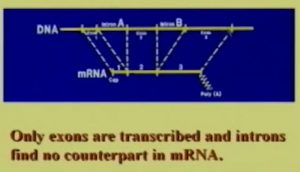
Now when we read the DNA this is a very complex situation, in fact we don’t even read the whole of a gene we read any portions of it called introns, and exons; and the exons are transported and translated and taken outside.
How did all of that come into existence, well we don’t yet have anything tangible, where just in the process of building something tangible. So how did it come into existence? You tell me, you have two choices, chance or design.
Because natural selection will only operate once the object is actually there, isn’t that that mind-boggling.
Would you like to see what it looks like?
Take a look at this short video clip which is titled
“Unlocking the Mysteries of Life. The Scientific Case for Intelligent Design”

Unlocking The Mystery Of Life The Scientific Case For Intelligent Design YouTube2
-
Unlocking The Mystery Of Life The Scientific Case For Intelligent Design YouTube2
And it came about by how? Chance or design.
That’s your only option, there is no other choice, and in actual fact what you saw in this animation is highly highly simplified.
When you consider what happens in the Cell as that DNA unfolds, and the enzyme systems that are required to produce this molecule, it is mind-boggling.
And when it passes through that nuclear pore it passes through with such precision that nothing else may enter and leave while this huge molecule is passing from one side to the other, everything is highly precise with recognising symbols and all kinds of structures; and one mistake and your a cabbage.
And it came about by chance, or design, because until that protein is actually there, natural selection cannot say whether it will work, or whether it won’t.
Now any modification in the genotype, to bring about any changes in the phenotype, must also occur only through chance through mutations.
So if we take my book scenario, now here’s my book. And if this book has instructions for an airplane, and I now want to change the instructions to get another airplane, then how must those changes take place in here? By chance, that’s right, you’ve got it, by chance, or by design, one of the two.
So now you get basic types of mutations, point mutations, chromosome mutations. Point mutations involve a change, or change in only a single nucleotide pair, you can have base substitutions, additions, deletions, all of those.
Now we’ve already said that the DNA code is a triple code.
AGT-GCA-GGC-ATT-CAG-GCT as an example of a normal code
The two DNA strands are termed polynucleotides since they are composed of simpler monomer units called nucleotides.
Each nucleotide is composed of one of four nitrogen-containing nucleobases—and they are:
Cytosine (C),
Guanine (G),
Adenine (A), or
Thymine (T)—and a sugar called deoxyribose and a phosphate group.
The deoxyribose alternates with phosphate groups to form the “backbone” of the DNA polymer and binds to nitrogenous bases. So these two work together to bind the structure of the DNA.
So here is our Normal code
– AGT-GCA-GGC-ATT-CAG-GCT
And let say that you deleted one (Take out the C in the second group)
AGT-GCA-GGC-ATT-CAG-GCT
Then you end up with this
AGT-GAG-GCA-TTC-AGG-CT
So that means that the entire message from the second group onward will be changed.
So what does that mean?
For the sake of simplicity we will use a triple letter code and you will see very clearly what the result will be: For example
THE CAT AND THE HAT
delete the “C” and the result is
THE ATA NDT HEH AT
So that means the mutation has made garbled junk out of the rest of the genetic information, is that correct ? So that is why mutations generally are harmful, incredibly harmful.
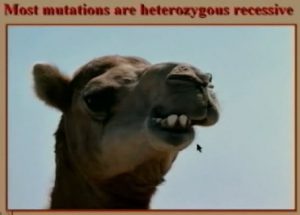 And this is not a mutation: It is just there to look cute.
And this is not a mutation: It is just there to look cute.
But the intricate design features that are built into this creature really boggle the mind: And is there such a thing as a mutation that is useful? Science will tell you yes; they will quote ‘sickle-cell anaemia’, and say well that’s a useful one. You see if you have the sickle-cell anaemia, and you happen to live in a malaria country then the malaria parasite cannot get into that sickle shaped red blood cell, and so the people don’t get malaria so readily, where-as other people do. So there you go, it is a positive mutation! – No; it is not a positive mutation, someone with sickle-cell anaemia is pretty sick. So it’s not a positive mutation at all, it just happens to be that in the case of malaria the victim will be slightly less sick than the one that has malaria; but he still sick. So there is no real positive mutation whatsoever.
So lets imagine now that the very first cell comes into existence; just by chance, it is highly improbable that the molecules would have come into existence by chance, because of the vastly different circumstances that they required, and even if they did. Would they form life? Highly improbable as you have to imagine ‘BOOM little house’, ‘BOOM little house’, ‘BOOM little house’, ‘BOOM little house’, thousands of times over, and you would really have to believe that, because chance or design is your only option at that level.
And then let’s say fortuitously, besides all of these issues that a cell appears: So now we have one cell. Now how many cells do we consist of? Trillions, and they’re all different.
So how do you account for a unique single cellular creature through evolution eventually giving rise to a multicellular organism?
Well a German Scientist by the name of the Haeckel came along and said, that’s not so difficult; what happened is this.
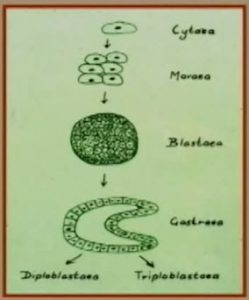 One cell came and then it divided, (Sounds simple but that’s a whole new story, just how did it divide?) and so it divided, and the cells stuck together, and they kept dividing, and eventually they formed a ball of cells, and eventually this structure began to move along (How was that? Yeh: It just started to move) and it developed a dent, and eventually this dent was like this and eventually the dent went all the way through, and there you have the basic body plan of every single living organism that is multi-cellular. Like we for example, we look like this ,with a dent all the way through, we have a tube going all the way through! Right? We have one opening at the top, and another one at the bottom.
One cell came and then it divided, (Sounds simple but that’s a whole new story, just how did it divide?) and so it divided, and the cells stuck together, and they kept dividing, and eventually they formed a ball of cells, and eventually this structure began to move along (How was that? Yeh: It just started to move) and it developed a dent, and eventually this dent was like this and eventually the dent went all the way through, and there you have the basic body plan of every single living organism that is multi-cellular. Like we for example, we look like this ,with a dent all the way through, we have a tube going all the way through! Right? We have one opening at the top, and another one at the bottom.
So that is the basic body plan.
Now think about this; if a cell divides, and it has genetic information, and the divided cells stick together, then both cells will have the same genetic information. Right or wrong? And if it divides again, it will still have the same genetic information, and if it divides and makes a ball then all the cells will have the same genetic information; and no matter how many times you divide it, they will all have the same genetic information.
Haeckel says: We can see in the evolution of animals that this happened because the embryos of the various animals all looked the same, of course they don’t tell you that he really cheated in this process; tremendously, and was even reprimanded at the highest level because of this.
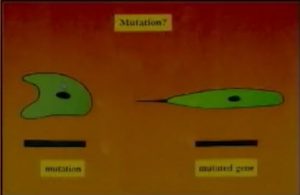
So how do you account then, for this amazing feat of mutation changing cells? Can I assume then that a mutation can change the shape of a cell into something else; even if that were possible, it is not what we would want.
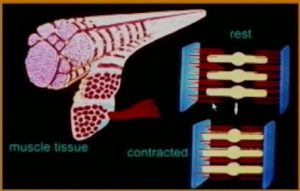
We want to develop different cells, so, for example lets take two. A muscle cell
You see a muscle cell must have genes which say you are a muscle cell, and a nerve cell must have genes which say you are a nerve cell. Does that make sense? Okay: But none of these could have existed in the beginning.
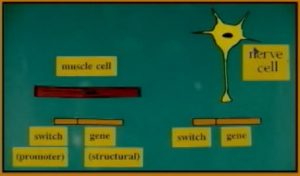 So let’s say that the first cell looks something like this
So let’s say that the first cell looks something like this
Well that could account for this shape, but it couldn’t account for the next shape
Where did that new shape come from?
So what we actually need is a new gene which says hello, you are now a nerve cell. Does that make sense? But that’s not enough; if I had a nerve cell in my body and I had a muscle cell here in my arm, what good would it do me if the two never communicated with each other, would it help me? No! Would it help me if I had muscle cells and nerve cells all jumbled up in my body, yes or no? Of course not, so where do I want my nerve cells? Well I want them in the right place; for example it would be very useful if you want to study to have them all up here in your head, isn’t that right? And if you wanted to pick something up, to do it with a liver cell would be pretty useless, so you want your muscle cells in the right place so that you can pick things up.
So how do I tell the cell that the genes for muscle must be switched on here in the arm, and the genes for brain must be switched on here in the head? How do I tell my brain, or my muscle that?
Well I need a switch: If I have two lights, one over here, and one over there; and I want that one on and that one off, or that one on and that one off. How many switches must have? – Two!
So now I need a switch because I’ve got two cells, but the original cells were identical so they didn’t need the switches, so now I have a question.
Where did the extra gene come from, that’s genotype, how did it come into existence? You have two choices, chance or design so ‘BOOM little house’.
Where did the switch come from? In fact you need two different switches. Where they come from? ‘BOOM little house’ ‘Boom little house’ That’s where they came from, that’s what you have to believe. There’s no other choice, no other choice whatsoever and this a highly complex mechanism for switching on genes and switching off genes that had to come about by chance or design.
You need one heck of a lot of faith for that.
Now we discussed in earlier in this section of how the genes actually came into existence, and science says that they came about by chance and we have shown how improbable that would have been.
Now; I have another problem, and that is the problem of irreducible complexity.
Irreducible complexity is a term used to describe a characteristic of certain complex systems, whereby they need all of their individual component parts in place, in order to function. In other words, it is impossible to reduce the complexity of it by removing any of its component parts; and still maintain its functionality.
So something that is so complex that it has to be complete before it will function, has to also come about by chance. For example a wing for a bird to to fly, and the feather to hold the bird up, has to come into existence, and actually function before it can even be tested to determine whether it will work, or whether it won’t work.
Lets take a look at this short video clip to help explain irreducible complexity a little better

Unlocking the Mystery of Life Irreducible Complexity Clip
-
Unlocking the Mystery of Life Irreducible Complexity Clip
So where do these structures come from?
These are questions that are really causing Darwinism quite a headache, as you can see here .
Here is a problem for you: Assume now that you find a highly complicated biochemical pathway in a bird, something that is very very complicated, let’s say the Krebs cycle. For any student who has studied this will know that there are many many reactions, and many many genes required to make the Krebs cycle work.
And then you find the Krebs cycle in this reptile, and you find the Krebs cycle in that insect and you find the Krebs cycle in that crab, and in that one, and in that worm, and in this, and in these sponges. Wow, so you find the Krebs cycle in all of them, and what does that tell you? It tells you that they must all be related, and since the a bird and a sponge are very very far apart, that means that this highly complex system must have been there from the beginning.
So, if you take all the complex biochemical pathways that are shared by every living organism under the sun, it means that they were all there from the beginning, and now we’re thinking ‘BOOM New York City’, complete with all the working elevators, swinging doors with locks and keys, the sirens blowing the whole works; everything coming about by chance. What incredible faith it must require to believe that.
Let’s have a look at selection:
Selection eliminates deviant phenotypes and normalizes the population of it’s stabilizing selection.
Let’s look at just one form of selection: What does it do? It eliminates deviant phenotypes.
Okay we have two airplanes, one flies well, one does not fly well. So I will select one and scrap the other; that’s what we’ll do, that’s what we call selection.
Now lets go to biology and take a look at the peppered moth, because the population possessed dark genes peppered moth:
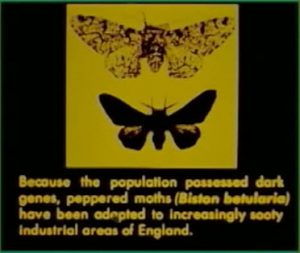
Because the population possessed dark genes, peppered moths have been adapted to increasingly sooty industrial areas of England
That’s the theory that they use, and then they show you this mock up where you have a light moth on a light background and a dark moth on a light background
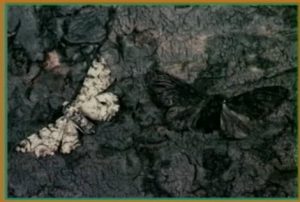
and another one where they show the opposite. A black moth on a black background, and a white moth on a black background
They simply stuck these moths onto dark and light backgrounds, they then supposed that it could happen that way and then proceeded to tell the public that it did happen that way.
But lets run along with their theory for arguments sake, and lets say that the area was generally black, so black background.
Which moth would have a greater chance of survival? Obviously the black one because the birds can’t see it, so the bird comes and eats the white one – what eventually happens to the white one? It disappears: That’s what we call in science, extinction.
Natural selection eliminates those genotypes which cannot survive under these circumstances.
All right, let’s do some mathematics; you started with how many moths? – Two; natural selection has eliminated one. How many have you got left? – One!
Alright; has natural selection now made more or less? – Less, that’s right; so natural selection has taken two and eliminated one. and so you have one left.
Now my question to you is the following.
How can you use a process: “Natural Selection” that makes less and less; and expect it to make more and more?
Because we have started with few animals on the earth, and we want to end up with lots and lots. So you cannot use a mechanism that makes less and less, and expect it to make more and more, it makes no sense, and it cannot happen.
In the past there used to be a lot more variety than there is today, so natural selection is surely doing away with things.
Now here you have the dog family, and you have a range from small to large dog, and many different shapes,
Question: Where did the genes come from? We have two choices; chance or design.
For all of that variety!
It didn’t come about by natural selection, natural selection doesn’t create anything; it only chooses between things that are already there.
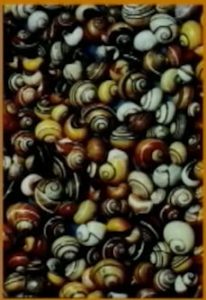
So in the past they would say every single one of these snails is a different species; today we know that this is one species.
Under some circumstances some sets of genes are activated, under other circumstances other sets of genes are activated, and so this is actually one set
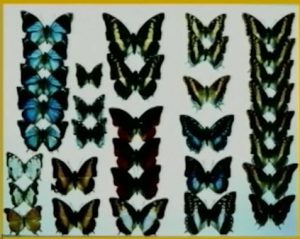
some butterflies for example have different appearances in different seasons;
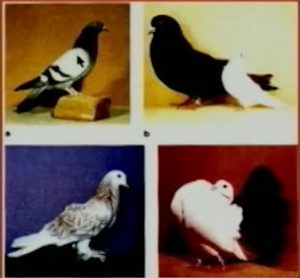
and some of these creatures like this pigeon actually must contain all the genes for what has been bred out of the wild pigeon that means large pigeons, small pigeons, black pigeons, white pigeons,
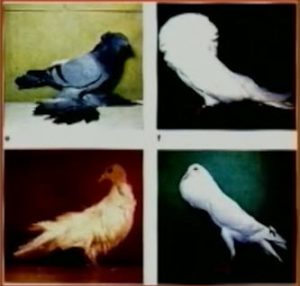
funny pigeons, all kinds of weird pigeons have been bred from the wild-type.
Either they were built in by some designer, or they came into existence by “BOOM little house”, “BOOM little house”, “BOOM little house”, that’s what you have to believe in terms of the probability.
This is an an interesting creature, it’s known as a Quagga and it’s an extinct type of zebra that only had stripes up to a certain area, and the rest was stripe-less.
This creature was extinct some 300 years ago and then they found a skin in a museum; and while they were cleaning it the taxidermist discovered some blood vessels stuck into back in the dried fat, and that contained red blood corpuscle. So what did they do?
They sent it for DNA analysis, and when the tests came back they were surprised because the DNA was identical to the plains zebra that lives today.
And so they took the plains Zebra and they started breading it in a breeding program to bread the Quagga back, and they were successful; and so we now have the Quagga back.
Now is that evolution, or was it just variety in the gene pool, what do you think, what was it? It was just variety in the gene pool!
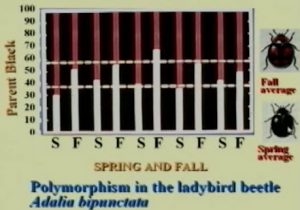 Here you have two ladybirds; the typical one which is red and the black, and then this black one.
Here you have two ladybirds; the typical one which is red and the black, and then this black one.
Originally they were thought to be two species until they discovered that one appeared only in the fall, and the other one appears in spring. So obviously there are two sets of genes in this creature, and the one set of genes is activated in the fall and the other set of genes is activated in the spring so you have two alleles over here, two possibilities.
Now two genes coding for different appearances, now where did those genes come from? Chance or design that’s your only option; in all of the these it’s exactly the same story.
Now these are insects; and insects go through various stages of life, at first there is a lava and the lava looks like a worm, then there’s a pupa which looks like a little bag hanging from somewhere, and then you can have a butterfly, or whatever develops out of that.
Wow; that means there must be complete batteries of genes coding for those totally different stages of each of these organisms. If you knew nothing about insects and I gave you a big fat caterpillar, wouldn’t you classify it as a totally different species to a butterfly, Yes or no? Sure you would!
So where did all these genes come from in that code?
Under one set of circumstances: Caterpillar! And then what happens to those chains? Tick-tick-tick -tick-tick-tick-tick switched off.
And another set of genes in the DNA are activated Tick-tick-tick -tick-tick-tick-tick – pupa.
And then those are switched off, and another set is activated Tick-tick-tick -tick-tick-tick-tick and you have a butterfly, three complete sets of genes in that one organism; each gene having to come about by chance, or design.
Because natural selection does not operate at that level. Incredible; that is mind-boggling
So if you want to have a mouse that you cannot see in the background like Peromyscus californicus on a white background or on a black background two sets of genes, each time “BOOM little house”
“Processes that modify the genotype, to increase the variation in the phenotype, also have to come about by chance.”
of course science thought about this and said: We have a problem, we have a huge problem here.
You see if DNA cannot be controlled through natural selection, and everything happens by chance, and the genes have to come about by chance, and then natural selection comes along and destroys parts of them, and we’re only getting less and less. Then how we get more and more becomes a real problem.
And so they came up with the idea that sexual reproduction increases the variety, so lets take a look at that notion.
One of the processes that can modify the genotype to increase variation is sexual reproduction, but how does it come about? It had to come about by chance, because unless the babies are there as a result of the union, you won’t have more variety.
So let’s think about that:
Genetic recombination is produced by:
1) Fertilization
2) Meiosis: Independent assortment and crossing over.
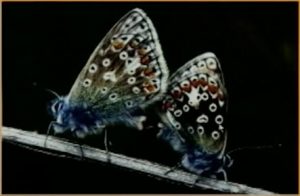 So fertilization: the whole process of sexual reproduction, the whole process of meiosis; one of the most complex structural processes, all of which came about by chance. Male and female; came about by chance. Amazing, because unless you have a male and a female, and unless that male and the female pair, and unless that offspring is actually born, we won’t have an increased variety. So how did everything come into existence up to that point?
So fertilization: the whole process of sexual reproduction, the whole process of meiosis; one of the most complex structural processes, all of which came about by chance. Male and female; came about by chance. Amazing, because unless you have a male and a female, and unless that male and the female pair, and unless that offspring is actually born, we won’t have an increased variety. So how did everything come into existence up to that point?
You have two options, chance or design.
Now; what does the Bible say?
The Bible says that God created them male and female.
But everybody knows that all people are born by the female, is that correct?
The Bible says that Eve came from Adam: Now is that scientifically logical, shouldn’t Adam have come from Eve, yes or no?
Yeah sure that’s the only logical way to think about it, but let me tell you something. Eve could only have come from Adam! Or to put it another way; Adam could not have come from Eve.
Why?
Because the female does not have the y-chromosome that is required to make a male, but the male has all the genes required to make a male or a female.
So Eve could only have come from Adam; the Bible once again is very correct.
But sexual reproduction, and all the processes associated with it had to come about by chance.
Here you have what happens.
Here is a chromosome, let’s assume that’s from dad
and there’s one that lines up that is identical that’s from mom, it has similar genes on it with different alleles so that you could have variety come into this.
So we have 23 pairs of chromosomes, half of them are from our mother, and half of them are from our father, and during meiosis they line up like this.
This whole process that makes them do this is just rearranging my letters in a book, we haven’t created the aeroplane yet. It’s not until the airplane is created that I even find out what I am going to end up with, I’m just jumbling up letters at the moment and it doesn’t mean anything in terms of natural selection.
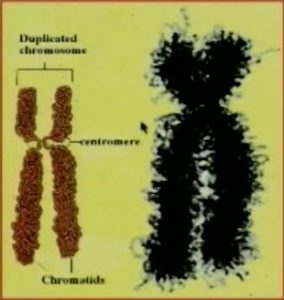
And so they come together and they divide in this complicated process, and then they do something amazing.
so when I produce Germ cells, or my wife produces Ova, and those two come together, then this process has already happened. So from my mother and from my father I am created as a mix of genes by crossing the genes over.
Now this is not so easy, what you need is you need an enzyme that runs along the DNA, and then you need another enzyme that comes along like a pair of scissors and cuts the one.
And then you need another one which sticks them together, in the meantime you’re unwinding the structure, causing a knot so you need stress reducing enzymes which release the stress. (magnificent set up) and then you link them together so that they are exactly in the right place.
And if you cut one nucleotide too far, and there are millions of them, and this reaction is taking place all over in the cell.
One slip, one nucleotide too far and the next gene reads THE ATA NDT HEH AT; instead of being a human you end up a cabbage.
No mistakes allowed, none.
And then you look like this, and then all this has to be unravelled, and in order for this to happen there has to be twists and turning and recombining, it’s a highly complicated system.
But all it does is it rearranges the letters in my book, it’s like taking a computer program and clipping portions out and putting them in another place, but it doesn’t produce anything it until it’s built.
So how did the mechanism come into existence? This highly complicated mechanism that is as complicated as what you saw on the video earlier on, how would come into existence? Chance or design that’s your only possibility.
So here we have some cave fish, notice that they haven’t got eyes, oh so they must be a new species says science.
Evolution? I don’t think so, I think what happened is under those circumstances, without light it’s not necessary for the eyes to develop, and so the genes which have all these nice little switches on them are just switched off.
So is this a new species? No it’s not a new species at all, it’s just a modified species because we have these nice genes, and these switching systems which had to come about by: How?
You have two choices; chance or design.
Birds that lose their wings: You have flightless rails, flightless pelicans, and flightless cormorants, on islands. Why?
Because if you’re far out on an island and you go for a flight, and the wind blows you out to sea and you can’t get back then that’s the end of you.
So they became flightless very quickly, is it a mutation in all of these creatures? I don’t think so,
I think it’s switch off switch off, switch off, switch switch off.
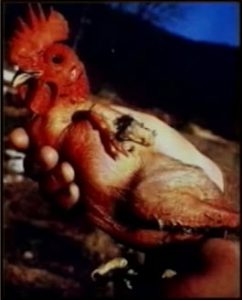
Now there’s a chicken that has lost its feathers, and why hasn’t it got feathers?
Because this one has a mutation, Do you see the difference? This one is a mutation, something’s gone wrong and it hasn’t developed feathers so that’s something different.
But you can get all these different kinds of animals by switching on, and switching of genes.This is a cross between a zebra and a horse: so you can get new varieties by crossing things
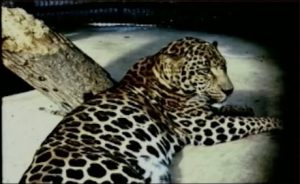
Here is a cross between a leopard and a Jaguar
Here is a cross between a sheep and goat;
but you can’t do this naturally so what they do is they take an embryo of one, take a few cells from that and the cells from the other one and link them together.
Put them into a surrogate mother and then you have an animal that develops part goat part sheep part goat part sheep part goat part sheep part goat part sheep, this animal is a total catastrophe.
All right so all these switching genes and things that you have, to create all these varieties are only able to come into existence by chance or design.
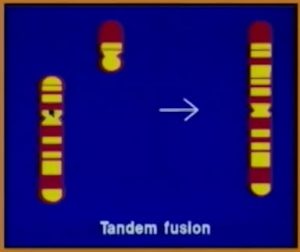
Now here we can do something else. If you have a chromosome and you take another chromosome and you link them together then you can get a long chromosome: We call that a fusion, a tandem fusion.
Now here is an animal that has such a fusion: This is the Eland, the largest antelope in the world. Notice that it has stripes on the side, and it has this twirled horn,
This one is the lesser Kudu, which is a smaller variety same stripes and the male will also have the horns.
Now they all have this fusion; and my question to you is this.
Do you think this is one kind, or are they it different species?
Well the world makes it all different species, but they all have the same aberration so I would say that this is just a variety of one kind.
Let’s take this little further
Here you have the wolf: And the wolf has 76 chromosomes, that’s more than what we have, and these are the varieties of wolves and they all readily interbreed so they don’t change shape too much, because the various clans interbreed so readily.
But when you come to the foxes it’s a different kettle of fish, they all look different, and what is more, is some of them have 38 chromosomes, and some of them 78 chromosomes, and everything else in between.
But if you take one with 38 chromosomes; the chromosomes are very long, if you take one with 78 chromosomes the chromosomes are very short.
And so what they did is they checked them out, and you know what? It’s the same information; it’s just arranged differently.
So my question is this. If you look at these creatures, and you look at the wild dogs and the dog races today.
Here is an Afghan, and a Belgian Shepherd, and a Puppy Long; there they are, we know that this is one species, and there is the variety.
And these are the wild ones, and these are supposed to be all different species, but in actual fact they all have the same genes, just arranged slightly differently.
It’s not new material, it’s just rearranged material.
So my question: Of all these wild dogs, and domestic dogs, and wolves, and coyotes: How many do you think went onto the ark?
One pair: That’s right. One pair, and all this variety came into existence from that one pair.
Of all those Antelope I mentioned.
How many needed to go on to the ark?
Well I tricked you. It is 7 pair, Why? Because they are clean animals.
But again the reduction in numbers that needed to go onto the ark is actually quite incredible.
If you take the Jackal, the Fox and the Coyote, three species.
The wolf will breed with the Coyote. Did you know that?
In central Canada where the Coyotes are very large they will breed with the wolf.
On the coast, the Coyote is much smaller and will not breed with the wolf.
But the Coyote is capable of breeding with the wolf, and the Jackal would be capable of breeding with the Coyote.
If you go to Australia; You will find the dingo, and there’s the dog, and you can see how very similar they are.
In fact the dingo is heading towards extinction. Why? because it breeds with the dog.
So the question. What is a dingo? The Dingo is a dog, that’s right.
You see we like as scientists to split everything up into hundreds and hundreds of species, when really a ‘kind’ is a much bigger thing than that.
All you need is one wild type and out of that you can get all the canines, dingos, foxes, and wild dogs, all from the one pair of canines that entered the ark.
And you can get it very rapidly because the genes already exist.
For example if you take two short chromosomes and fuse them into a long one; that would be using the information in a different way, and you have mice that do this.
You have mice with a few chromosomes, and there are very long ones like this, and you have mice with short chromosomes like this, but the information put together is exactly the same here; as in those other two.
So the house mouse and the field mouse, and all of these other mice have just got jumbled up information.
So how many mice went onto the ark, of all the different variations? – One pair.
Very interesting; then you have differences in heterochromatin and all kinds of interesting things.
We we have something else that increases variety. We have genes which we call transposons; where you can take a piece of information, and trans-locate it onto another piece of DNA. Phew!
Don’t think that this is a simple thing, all this happens at the level of the gene.
You have to cut this gene out, transport it to another location, make a snip, open up the DNA, put it in, close it up again and it’s going to be read in the new place.
And what can happen then?
In the new position the gene might be read more often, and in one generation you can go from a small mouse to a much larger mouse. In just one generation you have a much larger variety, and all you have done is taken the one gene and put it into another position.
You can do it with the dark mouse, you can do it with the light mouse, it doesn’t matter.
One simple step; but if you take that gene, and you cut it just one letter too far.
What will happen?
It would read “THE ATA NDT HEH AT” absolute rubbish.
It is an incredibly precise process; so it will pay to reflect on that for a moment.
Built-in variety in the gene:
This makes it possible for every kind of colour that you can imagine, every hair type that you can imagine, all of these things built into the genome.
Where did all those genes come from; what are your choices? – Chance or design.
Now imagine this: Everything I’m showing you here is genotype; so it all happened by chance (BOOM little house, BOOM little house, BOOM little house, BOOM little house,) all that variety: “By CHANCE”.
Reproductive exchange:
Now we have a male and a female; it means nothing until the children are there “BOOM New York city”.
Okay. Now we have male and female, they came about by chance.
The mechanism; the meiosis, the most complicated systems known to man “BOOM”, came about by chance.
Independent assortment:
All the different mechanisms to build everything, came about by chance!
Crossing-over during Meiosis
The crossing over during meiosis, whereby I can have an infinite number of different children.
Did you know that just from the independent assortment during meiosis, I can have 80 trillion different variants of children, whereas once crossing over is complete the number becomes limitless?
‘Will the two people that are exactly identical in this room please stand up?’ why is nobody getting up?
Because you are all different. Why are you all different?
Because your genes have different alleles, and even if they don’t, they are expressed differently, and that’s variety in the gene pool. Genes of Genesis
Recombination of Chromosomes:
Recombination of chromosomes gives you all these wolf types, and wild dogs, and all these antelopes!
Is that “Chance or design”?
Transposable DNA:
Transpose DNA is DNA that can jump from one place to another. “Chance or design”?
Some animals when they are under stress will totally rearrange their DNA, they’ll take it and jumble it up, and after the process a whole new batch of offspring will come forth.
For example; The naked mole rats are like that. Its amazing; there is one queen and she breeds, and when times get tough then she will produce many different variations.
And all of these different mechanisms were totally unknown to Darwin, and ALL of them could only occur by “Chance: or design”.
Imagine then that you are now equipped with this new information; and you are a new Darwin, and you come to the island and you find instead of the finches, you find Loxops, and you see all these varieties.
What do you think you would you say?
Would you say that because there is so much variety that they could not have come from one pair, and therefor God did not create them?
No; you would no longer say that.
You would say “WOW” what an amazing built-in variety in the gene pool, and these beautiful birds are evidence of God’ creation.
So the variety must have been built into the gene pool.
So now lets go to the human race:
We have many different races, and we can look at the different features.
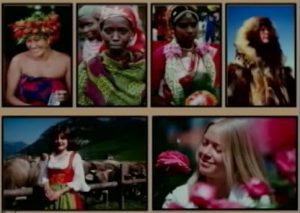
and you can see the similar groupings of the races in the women as found in the men
All the different races; where did they come from, what is the difference between them, is there one superior to the other, as some would say? Genes of Genesis
Well if you are equipped with this information then you will know that there is no difference between them: None whatsoever: Not at the genetic level.
White, and black for example is just the way in which the gene for melanin production is expressed.
I can produce melanin, I have the gene for it, if I lay in the sun I become darker. This is because my body increases melanin production; a black person just has a more active expression of the same gene that I have, so there’s no genetic difference there.
Its just that the controlling mechanism is activated differently, that’s all.
What about the differences in eye shape, that we find between the Eastern and the Western societies?
Well it’s just the way in which the fat is deposited in the eye lids that is different, it’s a purely biochemical process which is activated by the same genes that we all have, because we all have fat in our eyelids. So is there a difference? – No!
The expression is different, that’s all.
The eye colour: How is that determined? By different batteries of alleles. So I might have brown as dominant, and blue as recessive.
Then I might have for example two parents with bright blue eyes and blue is recessive, then their children will have what colour eyes? – Blue.
If you have one parent with brown eyes, and one parent with blue eyes then what will the colour of the eyes be?
Well it can be anyone, if the brown-eyed one only has the dominant gene then the children will have brown eyes, if both parents have a recessive gene then they could produce any colour.
So I always explain it to my students like this. If both your parents have brown eyes, or one of them has brown eyes and your brothers and sisters have all kinds of eyes that’s fine, but if both your parents have bright blue eyes, and your brothers have brown eyes then the father was probably the postman. Genes of Genesis
But even then I could be wrong, because sometimes you can have the gene, and its not expressed. Let’s say you have the gene for brown and it’s not expressed, and so it ends up being a different colour, it could be blue.
So what we are seeing here is a tremendous capacity for variety.
Now here you have Drosophila Mulli and Drosophila Digressa, and they look totally different. Genes of Genesis
Notice that this one has very red eyes, and this one has almost black eyes.
Some of them have white eyes, some of them have no eyes, some of them have long wings, some of them have short wings, some of them have no wings.
Some of them have one body, some of them have two bodies, but they’re all fruit fly. Genes of Genesis
One more question: Imagine that we have a piano.
And now imagine that the keys on the piano are the genes in your genome:
How many tunes can I play on the piano?
An infinite number of tunes, there is no limit to the number of tunes that I can play on my piano.
And if I had a guitar: The same would be true; and so I could go through every musical instrument with the same result.
But! How many guitar songs could I play on the piano? – None! (This is “kind”), the piano will always remain a piano.
It can express music, in many various tune’s, the same as with our DNA, but it will always remain a piano.
And because we have many different kinds, with so many possibilities for variation; we must conclude that
“God is a lover of variety”.
And all the gene systems, and the varieties that we see, must be an expression of that love for variety, that is your ‘only’ choice.
Unless you choose to believe that all of these structures, with all their complexity that we have discussed above; have come about by chance. Genes of Genesis
I believe you need more faith than anything else to believe that.
Nobody in his right mind; If asked where his watch, or his car, or his house came from, would give the answer “It evolved over time” thereby coming into existence by chance.
And the processes that we have seen that take place in the cells, that had to come about by chance, are millions and millions of times more complex than anything that man has ever devised.
Nothing comes even close to the complexity of what happens in the cell, and it came about by chance.
As for me and my household, I believe in a designer.
But the choice is yours, you can, if you want to believe in “BOOM little house”.
Thank you

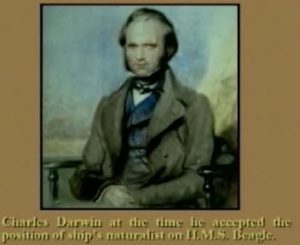
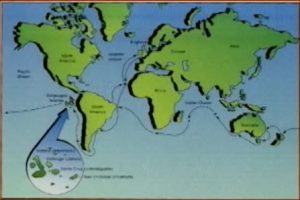
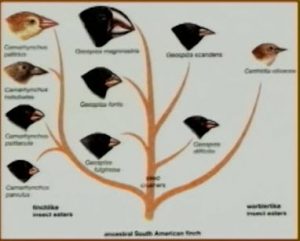
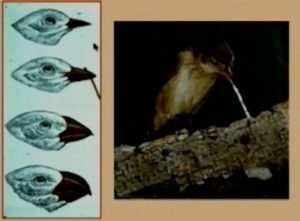
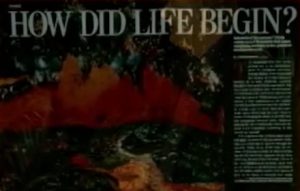
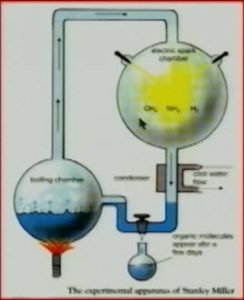
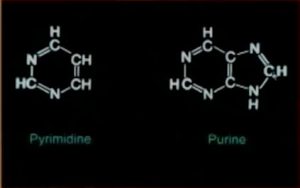
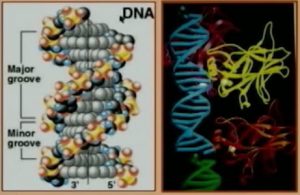
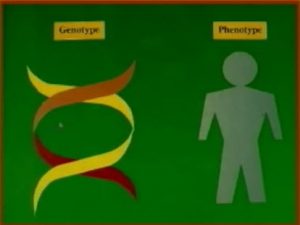
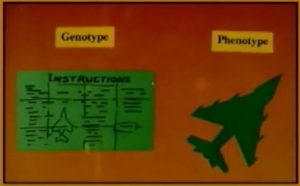
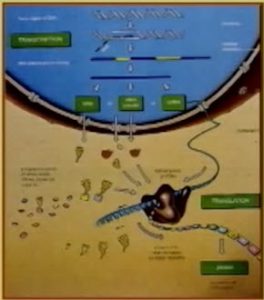
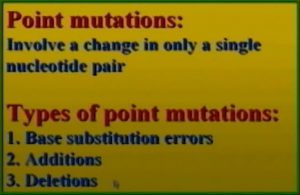
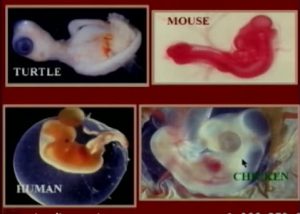
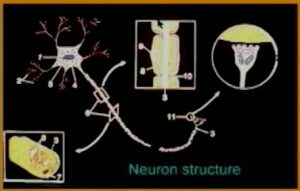
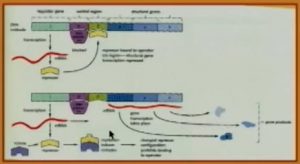
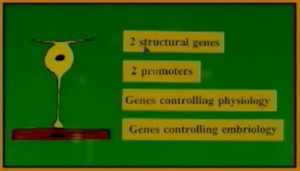
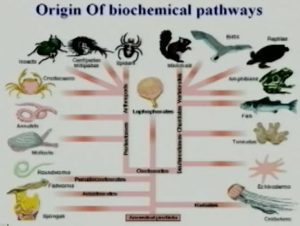
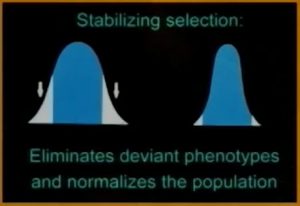
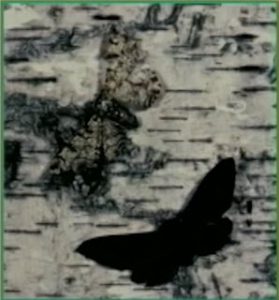
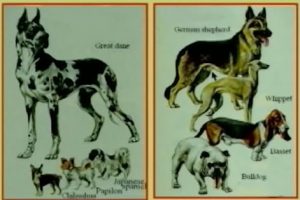
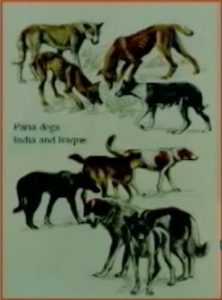

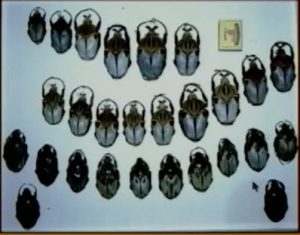
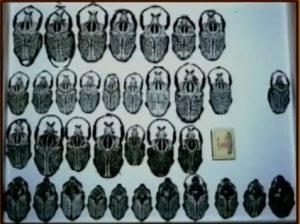
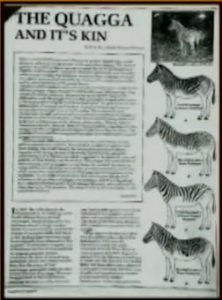
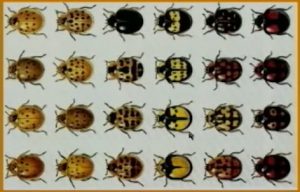
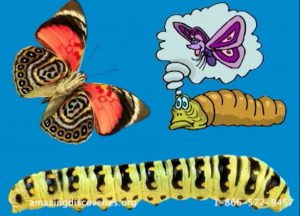
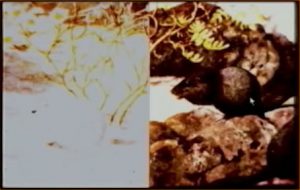
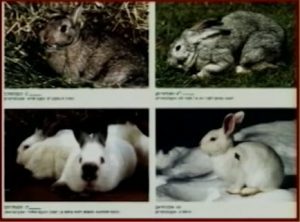
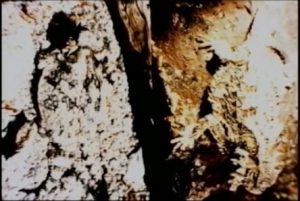
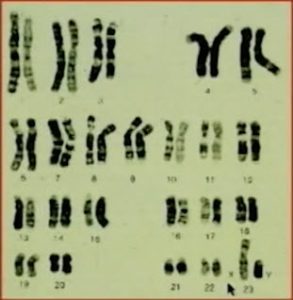
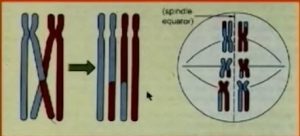
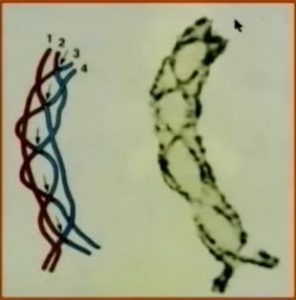
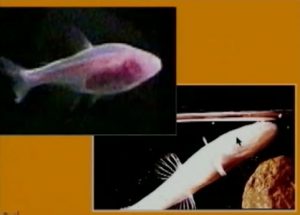
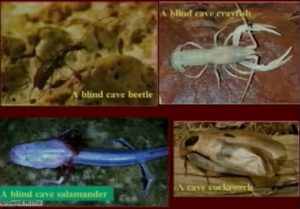
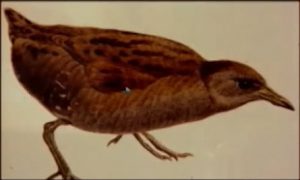
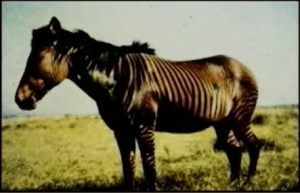
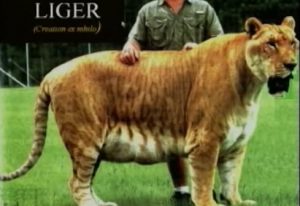
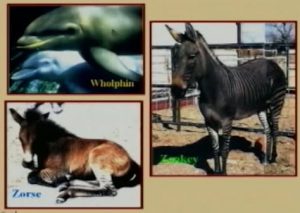
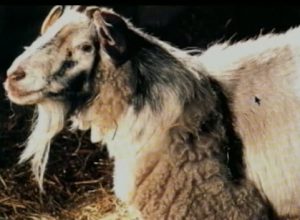
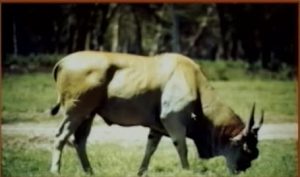
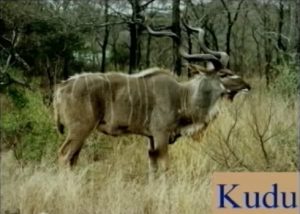
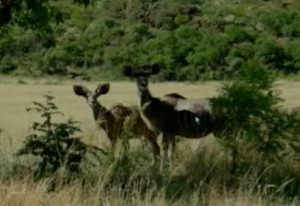
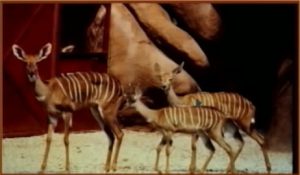
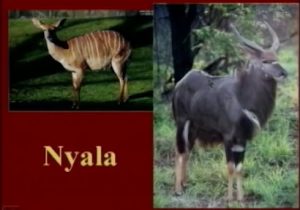
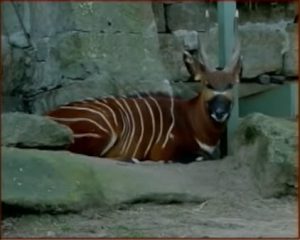
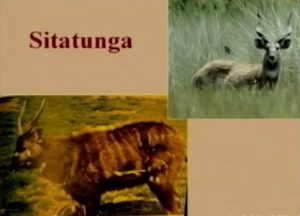
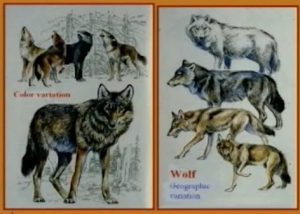
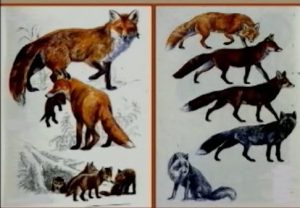
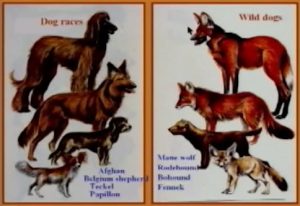
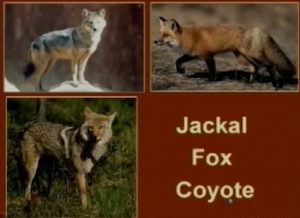
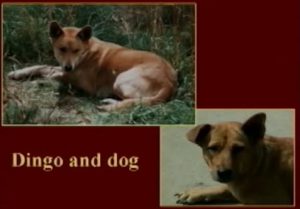
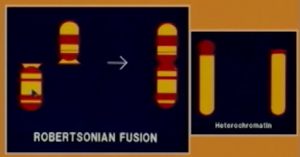
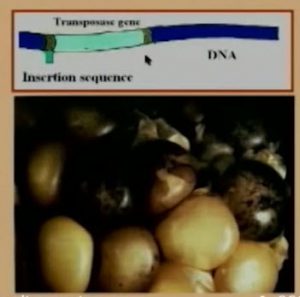
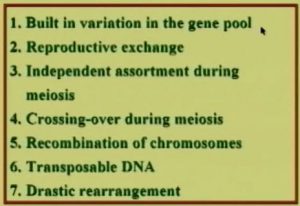
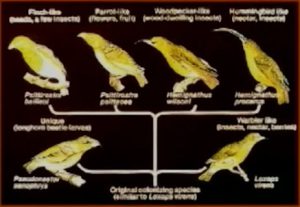

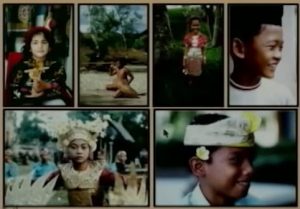
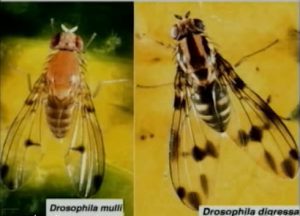
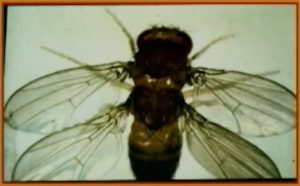

 In Chapter Four of Love Wins, Bell criticizes some statements of faith that he has taken from evangelical church websites that reflect Jesus’ teachings on Hell: “The unsaved will be separated forever from God in hell.” After giving a number of examples with which he feels uncomfortable, Bells states,
In Chapter Four of Love Wins, Bell criticizes some statements of faith that he has taken from evangelical church websites that reflect Jesus’ teachings on Hell: “The unsaved will be separated forever from God in hell.” After giving a number of examples with which he feels uncomfortable, Bells states,  The emergent-friendly, Global Dictionary of Theology, makes a distinction between ‘Hopeful Universalism’ and ‘Convinced Universalism’:
The emergent-friendly, Global Dictionary of Theology, makes a distinction between ‘Hopeful Universalism’ and ‘Convinced Universalism’: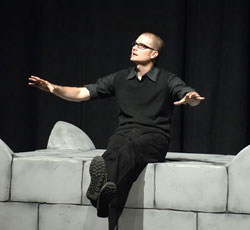 Indeed, in the very preface of Love Wins, Bell contradicts Jesus’ teaching that few would actually be saved. Bell writes:
Indeed, in the very preface of Love Wins, Bell contradicts Jesus’ teaching that few would actually be saved. Bell writes: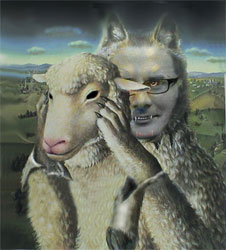 It is a sobering thought that Jesus went on to state in the verses immediately following His teaching on the narrow and broad roads, that false prophets would come in sheep’s clothing (Matthew 7:15-21). Such false prophets stand at the cross roads between the broad and narrow road, claiming to represent Christ, while pointing their followers toward the broad road that leads destruction, assuring them that it eventually leads to Heaven. Consider this for a minute. Isn’t this exactly what Rob Bell is doing?
It is a sobering thought that Jesus went on to state in the verses immediately following His teaching on the narrow and broad roads, that false prophets would come in sheep’s clothing (Matthew 7:15-21). Such false prophets stand at the cross roads between the broad and narrow road, claiming to represent Christ, while pointing their followers toward the broad road that leads destruction, assuring them that it eventually leads to Heaven. Consider this for a minute. Isn’t this exactly what Rob Bell is doing? Rob Bell not only redefines Hell by teaching that it will only be a temporary abode for those who want to leave later, but he redefines Hell by claiming that it is not so much about the after life, but it’s about what you make of the life here and now. In his book, Velvet Elvis, Bell had already stated this position:
Rob Bell not only redefines Hell by teaching that it will only be a temporary abode for those who want to leave later, but he redefines Hell by claiming that it is not so much about the after life, but it’s about what you make of the life here and now. In his book, Velvet Elvis, Bell had already stated this position: Rob Bell takes every possible liberty to deny reality and to either explain Hell away or get everyone into Heaven, regardless of his or her rejection of God and the Gospel. Bell not only empties Hell of God’s holy wrath, he creates an exit door from the inside out and claims that Hell is merely what we make it. He also claims that most of the imagery of future judgments in Hell were fulfilled on earth in AD 70 (p. 81).
Rob Bell takes every possible liberty to deny reality and to either explain Hell away or get everyone into Heaven, regardless of his or her rejection of God and the Gospel. Bell not only empties Hell of God’s holy wrath, he creates an exit door from the inside out and claims that Hell is merely what we make it. He also claims that most of the imagery of future judgments in Hell were fulfilled on earth in AD 70 (p. 81). By claiming that the unrepentant wicked will have a chance to get to Heaven from Hell, Rob Bell has gone beyond that of Edward W. Fudge, who states in The Fire That Consumes,
By claiming that the unrepentant wicked will have a chance to get to Heaven from Hell, Rob Bell has gone beyond that of Edward W. Fudge, who states in The Fire That Consumes,  Biblical Scholar D.A. Carson, commenting on Matthew 25:46, says :
Biblical Scholar D.A. Carson, commenting on Matthew 25:46, says :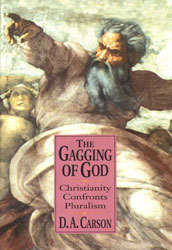 “What is hard to prove, but seems to me probable, is that one reason why the conscious punishment of hell is ongoing is because sin is ongoing.”
“What is hard to prove, but seems to me probable, is that one reason why the conscious punishment of hell is ongoing is because sin is ongoing.” There is hardly any wiggle room for a second chance in hell in these passages or anywhere in Scripture. Bell would have his readers believe of the book of Revelation that
There is hardly any wiggle room for a second chance in hell in these passages or anywhere in Scripture. Bell would have his readers believe of the book of Revelation that  May God give us the grace, in these times of apostasy, to hold fast to Jesus’ teachings and remain faithful to our loving and Holy Lord to the end. May God deliver His bride from the cotton candy Christianity that is endemic in Emergent Churches and among false prophets who lead the lost into believing they can put off repentance until after death.
May God give us the grace, in these times of apostasy, to hold fast to Jesus’ teachings and remain faithful to our loving and Holy Lord to the end. May God deliver His bride from the cotton candy Christianity that is endemic in Emergent Churches and among false prophets who lead the lost into believing they can put off repentance until after death.
Leave a Reply